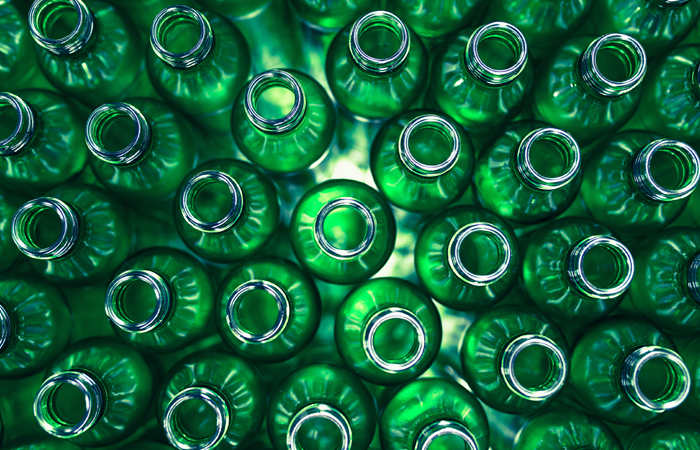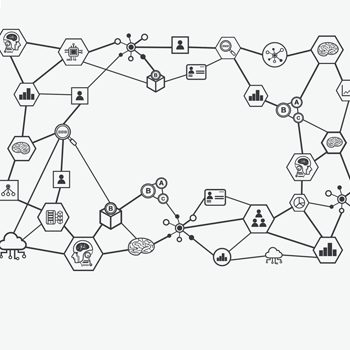การค้าออนไลน์-โลจิสติกส์: คู่ดูโอใหม่ยุค 4.0
โดย:
ดร.ไพศาล มะระพฤกษ์วรรณ
Paisan Maraprygsavan, Ph.D.
Director
Industrial and Service Trade Research Division
Trade Policy and Strategy Office
Ministry of Commerce
paisan711@gmail.com
ความเข้มแข็งของทั้งการค้าออนไลน์และโลจิสติกส์มีผลเกื้อกูลกันและกัน ปัจจุบันการค้าออนไลน์ของไทยมีการเติบโตแบบก้าวกระโดด โดยในปี 2561 ที่ผ่านมา มีมูลค่าสูงถึง 3.2 ล้านล้านบาท ขยายตัวร้อยละ 14 จากปีก่อนหน้า (ที่มา: ETDA) สูงเป็นอันดับ 1 ในอาเซียน ส่งผลให้โลจิสติกส์ได้รับอานิสงส์ไปด้วย โดยเฉพาะในกลุ่ม “ธุรกิจไปรษณียภัณฑ์และรับส่งสินค้า” โดยในปี 2561 มีมูลค่ากว่า 30,800 ล้านบาท ขยายตัวสูงที่ร้อยละ 11.3 จากปี 2560 ซึ่งมีมูลค่า 28,100 ล้านบาท (ที่มา: KResearch) ส่งผลให้การแข่งขันการให้บริการของผู้เล่นในตลาดมีแนวโน้มเข้มข้นขึ้น
จุดแข็งโลจิสติกส์ไทยที่เกื้อกูลการค้าออนไลน์
1. ไทยมีระบบเครือข่ายถนนที่ครอบคลุมกว้างขวางและมีการบำรุงรักษาที่ดี พร้อมทั้งมีการเชื่อมโยงกับประเทศในภูมิภาค ซึ่งสามารถสนับสนุนการขนส่งทางบกได้อย่างทั่วถึงทั้งประเทศ อีกทั้งยังสามารถเอื้อต่อการค้าออนไลน์กับประเทศเพื่อนบ้านได้สะดวก (ที่มา: BOI)
2. เมื่อพิจารณาในกลุ่มประเทศในภูมิภาคเอเชียตะวันออกและเอเชียตะวันออกเฉียงใต้ ไทยมีระดับการพัฒนาเครือข่ายการขนส่งสูงในระดับใกล้เคียงกับสิงคโปร์ (ที่มา: Fitch Solutions)
3. ตั้งแต่ปี 2557 เป็นต้นมา รัฐบาลได้อนุมัติโครงการพัฒนาโครงสร้างพื้นฐานด้านการขนส่งทั้งระบบ (งบประมาณปี 2558-2565) มูลค่าสูงถึงกว่า 51 พันล้านเหรียญสหรัฐ ภายใต้เมกะโปรเจคท์ 21 โครงการ (ที่มา: BOI) ด้วยจำนวนนี้ หมายถึง การเพิ่มขีดความสามารถและคุณภาพของเครือข่ายการขนส่งของประเทศ โดยเฉพาะอย่างยิ่งการขนส่งระบบรางของประเทศ ซึ่งจะช่วยลดความแออัดของท้องถนนและการพึ่งพาการขนส่งผ่านเครือข่ายถนนมากเกินไป
4. ล่าสุดไทยได้มีความตกลงเชื่อมการขนส่งระบบรางกับจีน และ สปป. ลาว รวมทั้งได้มีการเปิดสะพานมิตรภาพแห่งใหม่ ไทย-กัมพูชา ณ บ้านหนองเอี่ยน-สตึงบท (อำเภออรัญประเทศ จังหวัดสระแก้ว) อีกทั้งเปิดเส้นทางรถไฟคลองลึก-ปอยเปต เส้นทางรถไฟเชื่อมประเทศเพื่อนบ้านแห่งที่ 3 (แห่งที่ 1 เชื่อมมาเลเซีย แห่งที่ 2 เชื่อม สปป.ลาว) เมื่อวันที่ 22 เมษายน 2562 เพื่อเชื่อมโยงโลจิสติกส์ในภูมิภาค
5. การค้าออนไลน์และภาคการขนส่งของไทยได้รับประโยชน์จากความพยายามของรัฐบาลในการวางตำแหน่งประเทศให้เป็นศูนย์กลางการขนส่งสำหรับเอเชียตะวันออกเฉียงใต้ เพื่อตอบรับกับการรวมตัวของ AEC ซึ่งนับวันจะยิ่งทวีการค้าภายในกลุ่มกันมากยิ่งขึ้น
6. เครือข่ายการขนส่งโดยรวมมีการพัฒนาค่อนข้างดีและมีการเชื่อมต่อที่ดี โดยเฉพาะกับซัพพลายเชนทั่วประเทศและตลาดต่างประเทศ รวมทั้งประเทศเพื่อนบ้าน
7. การเดินเรือตามลำน้ำและชายฝั่งสามารถทำได้ตลอดปีและมีค่าใช้จ่ายต่ำในทุกภูมิภาค สามารถเป็นการขนส่งทางเลือกแก่การขนส่งทางบกที่แออัด
8. ระยะเวลาขนส่ง (Shipping lead times) และต้นทุนขนส่งมีความได้เปรียบทางการแข่งขันในภูมิภาค จะช่วยให้ดึงดูดการลงทุนด้านการผลิตมากขึ้น ซึ่งจะมีส่วนผลักดันให้การค้าออนไลน์ขยายตัวยิ่งขึ้น (ที่มา: BOI)
9. ปัจจุบันจะมีผู้ประกอบการโลจิสติกส์ถึงกว่า 100 ราย และเมื่อพิจารณาถึงการเติบโตของการค้าออนไลน์ที่มีสูงมาก คาดว่าจะมีผู้ประกอบการรายใหญ่เข้าสู่ธุรกิจนี้มากขึ้น ก่อให้เกิดการแข่งขันมากขึ้น โดยเฉพาะด้านราคา ซึ่งจะเป็นประโยชน์ต่อผู้ค้าออนไลน์
The strengths of online commerce and logistics are reciprocal. In 2018, Thailand’s e-commerce sector grew rapidly, expanding 14% year-on-year to THB 3.2 trillion (Source: ETDA), making Thailand the biggest market in ASEAN. Consequently, the country’s logistics sector also benefits, especially in mail and delivery services. In 2018, the sector is valued more than THB 30,800 million, expanding 11.3% from THB 28,100 million in the previous year (Source: KResearch), making the competition even more intense.
The Strengths of Thai Logistics System that Support E-Commerce
1. Thailand has an integrated road network that is well maintained. The roads link to other countries in the region, making it easy to conduct deliveries for online merchandise through land transport from Thailand to its neighbouring countries. (Source: BOI)
2. Comparing to other countries in East Asia and Southeast Asia, Thailand’s transportation network development is as high as those of Singapore. (Source: Fitch Solutions)
3. Since 2014, the Thai government approved more than USD 51 billion budget for 21 land transportation mega-projects (fiscal year 2015-2022) (Source: BOI). This means the enhancement of capacity and quality of transportation network in Thailand, especially rail transportation, which will reduce congestion and excess reliance on roads.
4. Recently, Thailand agreed to connect its railway with China and Lao PDR. Ban Nong Ian-Stung Bot Friendship Bridge (Aranyaprathet district, Sa Kaeo province) is also opened, as well as a new railway from Klong Luek to Poipet on April 22, 2019. The railway is Thailand’s 3rd rail connection to its neighbouring countries (one links to Malaysia, and another links to Lao PDR), and should boost regional logistics network.
5. Thailand’s e-commerce and logistics benefit from the government’s attempt to position the country as a logistics hub in Southeast Asia in response to the integration of the ASEAN Economic Community (AEC). Within the community, internal trade is increasing intertwine.
6. Thailand’s logistics network has been well developed and well connected, linking supply chains and markets across the country to its neighbouring countries.
7. Navigation in rivers and seas can be conducted throughout the year at low costs, which can be a good alternative for congested land transportation.
8. Shipping lead times and costs in Thailand are at advantage of other countries, which can attract more investments and generate more growth for online commerce (Source: BOI).
9. Now, there are more than 100 players in Thailand’s logistics sector. Considering the growth of online stores, it is expected that more players will come in, which will intensify the competition especially for costs, thus benefit online businesses.









